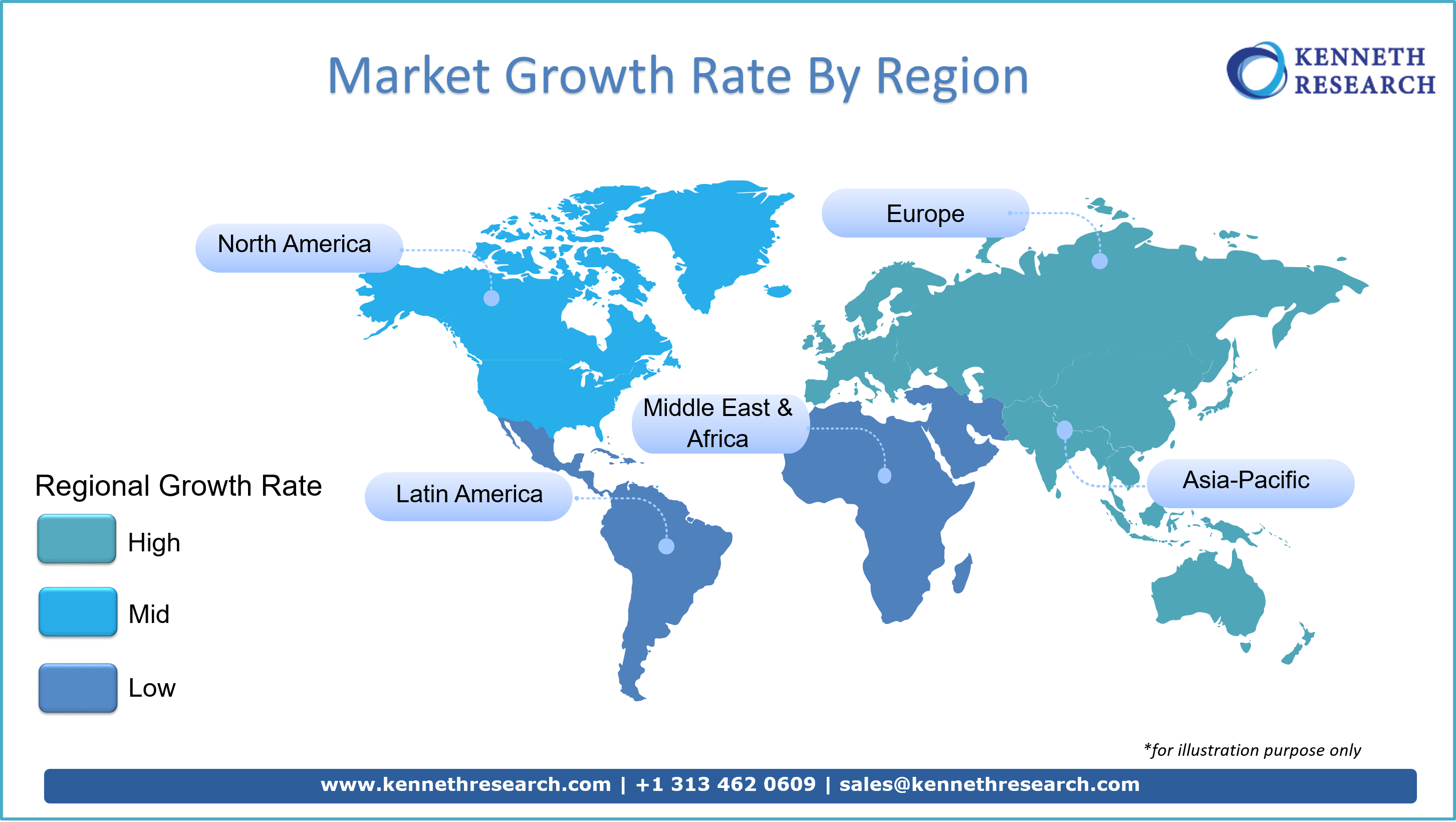
Global Smart Highway Market Analysis & Outlook 2030
-
Product Code:
RP-ID-10352103 -
Published Date:
21 Oct 2022 -
Region:
Global
-
Category:
Building & Constructions -
Publisher:
Pub-ID-54
Impact Analysis on the Growth of Market
Inflation and Looming Recession to Haunt Businesses:
In 2022 & 2023, market players expected to sail in rough waters; might incur losses due to huge gap in currency translation followed by contracting revenues, shrinking profit margins & cost pressure on logistics and supply chain. Further, U.S. economy is expected to grow merely by 3% in 2022.
....
The Research Report is Updated with 2022 Base Year, 2023 Estimated year and Forecast till 2035 with Market Insights.
With the dip in global production, the GDP has contracted in 2020 and impacted the market across the world. Upon placing a Sample Request, you will receive an updated report with 2022 as base year, 2023 as estimated year and forecast to 2035. This will have market drivers, recovery rate in the market, insights and competitive analysis.
Market Overview:
Translate Report
The global market size of virtual sensors in 2021 is estimated at USD 300 million. It is expected that the increase in the adoption of cloud IoT platforms and the massive demand from the manufacturing industry will support the growth of the global market during the forecast period. In addition, the increasing deployment of virtual sensors can also be attributed to organizations; increasing awareness of their benefits and cost-effectiveness. Virtual sensors are software-based solutions, also known as soft sensors. They are developed using multiple physical sensor output readings as mathematical models. These solutions were implemented to overcome the limitations associated with physical sensors. A single virtual sensor is sufficient to predict results based on multiple parameters such as temperature, pressure, speed, and location. Therefore, due to cost advantages, these solutions are increasingly being implemented as alternatives to physical sensors.
Virtual sensing solutions are in great demand, especially in the telecommunications, technology, aviation, automotive, and media industries. The functional efficiency they provide in the real world is driving the demand for such solutions. In addition, organizations are using virtual sensors to achieve greater efficiency, agility, and scalability in their operations. Therefore, it is well known that virtual sensors can minimize operating expenses and improve operating efficiency. Leading manufacturers attach great importance to developing virtual sensing solutions as standard models. Therefore, standardization has become an important trend, and it is regarded as a point of view to characterize inspection data.
This leads to the construction of a framework-based model for sensor implementation, which can further help identify the key data points generated in the standardized model. It is also expected that the model allows various sensor applications to seamlessly modify data between sensor networks. However, from a technical point of view, sensor networks may have certain limitations, as shown by other implementations of the network. The data security issues of deploying virtual sensors on cloud sensor networks restrict organizations from adopting virtual sensors. However, vendors are highly committed to developing secure cloud solutions to solve data privacy issues. Subscription-based private cloud platforms have emerged on the market to overcome security and privacy issues.
Component insight:
The solution segment is expected to show strong market growth throughout the forecast period. With the introduction of Industry 4.0, cloud-based virtual sensing solutions are gaining momentum in manufacturing facilities. These solutions improve robot-guided operations by predicting and reducing accidents. In addition, due to the intensive technology used for data accumulation, the demand for sensors in cloud solutions is high. Under these services, virtual sensors provide sensitivity, speed and diversity, which are mainly transformed into fast retransmission of information transmission between two nodes in the network.
Companies can choose between complementary products, complementary products, and even look for alternative products. For example, the basic difference between these highlights the potential functional specificity and the method of deciding to zero the sensor for a specific task. The success or failure of a company mainly depends on the choice of service type and the associated complexity. Therefore, the increased digital awareness of the company;s choice of fortresses is very influential in promoting the growth of this market segment.
Deployment Insights:
In 2020, the internal deployment field dominated the virtual sensor market. On-premise deployment is a traditional deployment mode, and it is currently the dominant area due to improved data security and low privacy concerns. In addition, local deployment requires IT professionals who can track, monitor, and manage the optimization process in real time. It also enables companies to install highly secure, customized and complex software-based virtual sensor solutions to meet specific business needs.
The increasing deployment of sensor networks through cloud computing has led to the introduction of sensor clouds. The sensor cloud is the hub of a virtual sensing solution based on physical wireless sensors, which can autonomously meet user needs according to applications. The main advantages of this approach are the high ability to share data between peer-to-peer networks, better sensor manageability, and the low total cost of collecting data for users and systems. In addition, this approach enables companies to migrate their services to the cloud, where resources can be further expanded.
End-use information:
According to end-use, the market can be subdivided into oil and gas, automotive and transportation, manufacturing and utilities, electronics, healthcare, aerospace, and defense. Due to the high demand for real-time data and monitoring systems in operations, it is expected that manufacturing and utilities will gain huge appeal. In addition, the Internet of Things and Industry 4.0 have led to the establishment and upgrade of fully automated and wirelessly connected smart factories. Therefore, Industry 4.0 and the Internet of Things will further support the growth of the manufacturing industry during the forecast period.
Regional information:
Due to the increasing use of IoT cloud models as part of virtual deployments, North America maintains a dominant position in the global market. Since virtual reality is a prominent technology in the entire North American public sector, the existence of major SaaS-leaning vendors has triggered the market;s demand for virtual sensors. In addition, the regional market depends on continuous innovation in the field of virtual reality. Therefore, the greater willingness of companies in the region to adopt innovative and advanced technologies is supporting the overall growth of the market. The European market is severely affected by the widespread use of virtual sensors in healthcare to detect anxiety, phobias and panic disorder in patients.
Continuous innovations in virtual reality, such as the integration of biosensing feedback supported by virtual reality and data integration, are driving the demand for virtual sensors in the European market. The positive outlook for the healthcare industry in the region will create lucrative growth opportunities for manufacturers operating in the market. In addition, the untapped potential of the Italian, Dutch and German markets provides profitable growth opportunities in the near future.
Information about the market share of virtual sensors:
The main players operating in the global market are Siemens AG; General Electric; Aspen Technology; Elliptical Lab A/S; and Touch Mobile. These companies are effectively using their existing consumers to promote the adoption of virtual sensors. In addition, suppliers are investing heavily in the research and development of virtual sensing solutions to meet customer needs. Due to the high growth potential of the market, several other companies have begun to provide virtual sensor services to take advantage of market opportunities. The global virtual sensor market is characterized by a limited number of market participants. Providing customized solutions according to customer requirements is a major trend observed in the market. In addition, product launches and technical cooperation are the primary strategies recently chosen by major players in the virtual sensor market. For example, in September 2018, Tactile Mobility launched its touch sensing and data analysis platform to provide consumers in the automotive industry with an excellent driving experience.
Market segments covered by the report:
The report forecasts global, regional, and national revenue growth, and analyzes the latest industry trends in each sub-segment from 2022-2030. For the purpose of this research, Kenneth Research will report on the global virtual sensor market by component, deployment, end use, and region: Outlook component (revenue, millions of dollars, 2022-2030) solution service deployment outlook (revenue, Millions of dollars, 2022-2030) CloudOn-PremiseEnd-use Outlook (revenue, dollars) million, 2022-2030) oil and gas vehicles and transportation manufacturing and utilities electronic healthcare aerospace and defense others.
Geography Analysis:

The report further discusses the market opportunity, compound annual growth rate (CAGR) growth rate, competition, new technology innovations, market players analysis, government guidelines, export and import (EXIM) analysis, historical revenues, future forecasts etc. in the following regions and/or countries:
- North America (U.S. & Canada) Market Size, Y-O-Y Growth, Market Players Analysis & Opportunity Outlook
- Latin America (Brazil, Mexico, Argentina, Rest of Latin America) Market Size, Y-O-Y Growth & Market Players Analysis & Opportunity Outlook
- Europe (U.K., Germany, France, Italy, Spain, Hungary, Belgium, Netherlands & Luxembourg, NORDIC(Finland, Sweden, Norway, Denmark), Ireland, Switzerland, Austria, Poland, Turkey, Russia, Rest of Europe), Poland, Turkey, Russia, Rest of Europe) Market Size, Y-O-Y Growth Market Players Analys & Opportunity Outlook
- Asia-Pacific (China, India, Japan, South Korea, Singapore, Indonesia, Malaysia, Australia, New Zealand, Rest of Asia-Pacific) Market Size, Y-O-Y Growth & Market Players Analysis & Opportunity Outlook
- Middle East and Africa (Israel, GCC (Saudi Arabia, UAE, Bahrain, Kuwait, Qatar, Oman), North Africa, South Africa, Rest of Middle East and Africa) Market Size, Y-O-Y Growth Market Players Analysis & Opportunity Outlook
.


